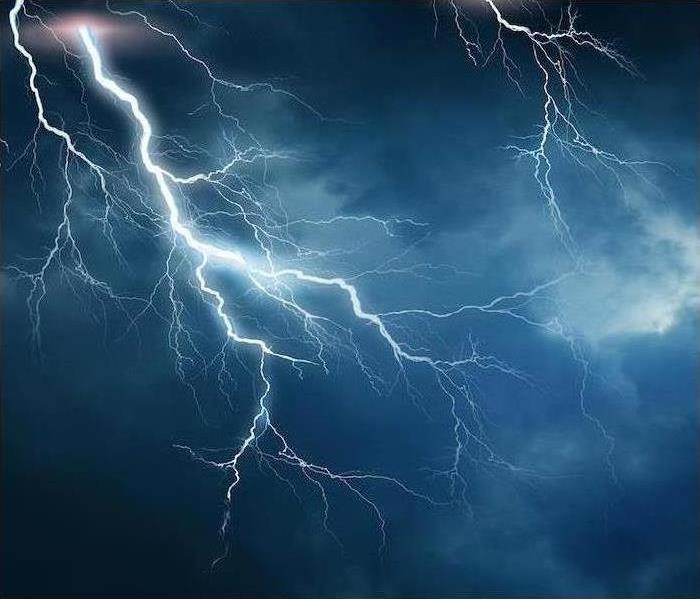Types of Storm Damage
10/22/2024 (Permalink)
 When you suffer storm-related damage to your home or business, make SERVPRO of Billings your first call.
When you suffer storm-related damage to your home or business, make SERVPRO of Billings your first call.
When you own a home, you likely always feel a twinge of fear when severe weather is rolling through. While homes are typically built to withstand a good deal, when a crazy storm hits, any property could suffer damages.
Strong winds that can carry debris across entire communities, winter storms, freezing rains and even just a mild thunderstorm are all a threat to your property throughout the year. These events can sometimes be so strong the very structure of your home is affected.
Each weather system presents a different level of risk to your home, but there are other factors to consider as well. The geographic location of your property, your landscaping and the strength of the building materials are all indicators of how much damage you may or may not receive. Even with every consideration, sometimes weather has a mind of its own and how you fare in a storm simply comes down to luck.
While we have just about every variety of weather here in Billings, we commonly see thunderstorms that can drop large hail in the summer and intense snowstorms in the winter. This past July, several counties endured a storm that came with baseball-sized hail and left a wake of damages. Preparing our homes and our lives for these weather extremes is incredibly important.
If your home is damaged in a storm, make sure you seek a professional opinion when you decide to stay or go. While most storm damage is pretty obvious, sometimes the structure of your home could be unstable with little outward evidence.
Preparing for the most common kinds of storm damage will always be the best way to mitigate your risks and ensure your safety. “The more you know,” right?
Wind
Wind damage can happen quickly, particularly when violent sustained winds batter an object at a high velocity. Tornadoes and hurricanes will always come with extreme winds, but even a mild thunderstorm can produce gusts of up to 100 mph and induce damage.
Winds at this strength can fling debris into your home or vehicles and topple trees. If you are sheltering in place during a storm, make sure you are in an interior room away from exterior walls and windows. When limbs and rocks are picked up, they can pierce walls and break glass, so stay inside and stay safe.
You can take preventive action and avoid some damages caused by strong winds. Pick up and dispose of loose limbs on a regular basis, and make sure large rocks are far away from your home.
If you have furniture outside, find some way to secure it so that it can’t go flying. Trim trees and remove any that are dying before they can fall over. The less loose items a storm can pick up, the less damage you will receive.
Water
Water is one of the most common forms of damage that occurs across the United States. Even in an area that is not flood-prone, a heavy rain can cause accumulating puddles or flash floods that can enter through doors and windows.
If an extreme amount of water gathers, it can actually seep through your foundation, which over time will lead to structural damage. As our weather warms up late in spring, snowmelt can lead to ice dams and overflowing bodies of water that pose a risk to the properties in our area.
Fortunately, the area outside of your home can play a key role in protecting your property. Be strategic with your landscaping to ensure there is a slope away from your house so water flows where you want it.
You can also consider installing a rain garden that not only will add curb appeal to your home, but is also very effective in absorbing moisture before it has a chance to intrude into your property.
Keeping your gutters cleaned is another way to ensure that water flows away from your home without pooling up. When water is unable to flow cleanly, your gutter system can quickly become overwhelmed, which can lead to water entering your home through your roof. This can mean damage to every level of your home.
Impact
When a tree falls onto your home or other property or a piece of debris flies into something, it is considered “impact damage.” This kind of damage can bring down entire buildings and can be completely catastrophic.
The best way to prevent impact damage is trimming and removing trees that are no longer healthy or that have grown too close to your home. While this can be costly and time-consuming, it can also be life-saving.
In 2021 alone, weather caused nearly $145 billion in damages across the nation. The more you prepare yourself and your property, the more you can lower your overall risk and rest easy knowing your home is a safe environment no matter what Mother Nature throws your way.
If your home is damaged in a storm, call SERVPRO of Billings as soon as possible. Our professionals are available 24⁄7 and come with years of experience and top-of-the-line equipment. It is our primary goal to get your home back to exactly as it should be as fast as possible.
When you suffer storm-related damage to your home or business, it’s important that you know who to call! Contact us today to get your storm damage restoration started faster.




 24/7 Emergency Service
24/7 Emergency Service